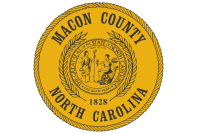Duke profits take precedence over state’s public interest
 By Avram Friedman • Guest Columnist
By Avram Friedman • Guest Columnist
By proposing to replace its Lake Julian coal plant in Asheville with a new natural gas/fracking-fired mega power plant in Western North Carolina, Duke Energy is moving in an anachronistic direction that inhibits the transformation to energy efficiency and renewable energy needed to address rising energy costs and climate change.
Massive investment in energy efficiency is a much more economical way to meet energy demand than building, operating and continually fueling a new power plant. No one knowledgeable in the field of commercial energy production can argue with this assertion. The cheapest kilowatt is the one that isn’t needed due to efficiencies on the user end. Energy efficiency programs aimed at reducing energy waste cost utilities only about three cents per kilowatt hour, while generating the same amount of electricity from sources such as fossil fuels can cost two to three times more.
Given the negative economic, health and environmental impacts of burning fossil fuels or using the nuclear fuel-fission-waste cycle to generate electricity, it would be logical for public policy to require maximization of efficiency and minimization of production capacity. But, due to the terms of an antiquated public utility system of regulated monopoly in North Carolina, the reverse incentive currently applies.
Under this system Duke Energy is currently granted a rate of return of 10.2 percent on infrastructure capital expenditures, assuming the project is self-financed. This means that if the company spends $1 billion on building a new power plant, the law requires that rates will be adjusted to ensure that Duke Energy realizes a profit of $102 million on this expenditure. Get it? This is a no-risk “investment” with a huge return for Duke Energy shareholders, at the expense of the ratepayers (you and me) who foot the bill for the construction and legally required profit even if it isn’t the best or most economical way to meet energy demand.
At one point in our history this type of regulated monopolistic arrangement may have been advantageous to guarantee the economic health and stability of a new and growing energy industry that promised to provide reliable electricity to light homes and run factories. In that era, the promise of reliable electricity overshadowed any health or environmental concerns that weren’t as fully understood as they are today. The priority, then, was to incentivize growth in the energy industry to bring modernization to North Carolina.
Related Items
While providing electrical energy to all North Carolinians is still essential today, circumstances have changed substantially, not only in our awareness of the health and environmental impacts of conventional electrical energy production, but also because of the quickly evolving energy efficiency revolution. The highly-centralized and rapid-growth model of the regulated-monopoly utility system no longer meets the criteria of sensible public energy policy in the year 2015. This system from a different era is a vestige that has become counter-productive today.
In 2011, 2013 and 2015 a growing group of North Carolina legislators in both the House and Senate have sponsored a bill entitled “The Efficient and Affordable Energy Rates Bill.” The 2015 versions are House Bill 377 and Senate Bill 483, sponsored by 15 state legislators.
The core purpose of the bill is to steeply incentivize private investment in energy efficiency to enable a dynamic reduction in statewide energy consumption and production. The new utility rate structure would substantially lower monthly energy bills for those who make the investment in efficiency, aided by low-interest loans from a dedicated Energy Efficiency Bank. Similar measures have been successfully implemented in at least seven other states and several nations to successfully reduce energy consumption while fostering the growth of new industries in energy efficiency and rooftop solar energy, creating thousands of new jobs in the process. Arizona, New Mexico, California, Nevada, Vermont, Iowa, Washington State and Nova Scotia, Canada are among the states and nations where this type of program has been implemented in North America.
Protecting its sweet deal as a regulated monopoly, as you might expect, Duke Energy has brushed aside H377/S483 as unworkable in North Carolina. The real bread and butter for their shareholders is in the guaranteed profit realized from building more power plants and infrastructure, while nurturing a steady growth in energy consumption. But, a continuation of this business model is in conflict with the public interest. The public policy that would most benefit residents and ratepayers is the implementation of programs that reduce energy consumption and eliminate the need to build more centralized power plants.
Reversing Duke Energy’s plans for building a new natural gas, fracking-fired mega power plant in Western North Carolina will require the public to rise up and demand a basic change in our state’s public energy policy. It will be necessary to adopt the type of measures introduced in the Efficient and Affordable Energy Rates Bill. If you really want to stop this power plant construction, tell your state legislator, the governor and the Utilities Commission to push for the passage of H377/S483.
(Avram Friedman is the executive director of the Sylva-based clean air/renewable energy advocacy group the Canary Coalition. He can be reached at This email address is being protected from spambots. You need JavaScript enabled to view it..)









